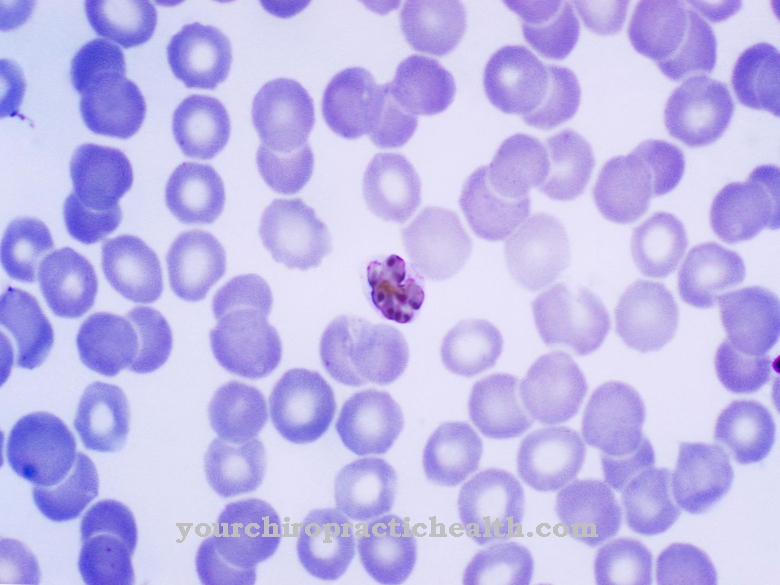The TBE virus is the causative agent of early summer meningoencephalitis (TBE). The tick is considered to be the main vector of the flu-like illness. The course is very variable. In the worst case, serious complications and even long-term damage to the nervous system can occur.
What is the TBE virus?
TBE (early summer meningoencephalitis) is one of the notifiable infectious diseases in Germany. The virus that causes it comes from the Flaviviridae family. Its structure consists of a single, enveloped RNA strand. There are three subspecies of TBE: Far Eastern Subtype, Western Subtype and the Siberian Subtype.
As a natural intermediate host, the virus uses insects for transmission to the ultimate host. Ticks mainly transmit the TBE virus to humans through contaminated saliva during their blood meal. The TBE virus is closely related to the cause of dengue and yellow fever.
In Germany alone, people fall ill every year in the three-digit range. Due to the extremely variable extent of the health effects, not all cases are registered. At the beginning, symptoms are also very unspecific. Often, however, there is no disease despite the pathogen getting into the bloodstream.
The incubation period is about one to three weeks until the first signs of disease appear. Due to the time difference and the unspecific symptoms, there is a risk of confusion with the usual summer flu. Often, the contact of the virus with the immune system goes completely unnoticed.
The main carrier is the tick called the common wood tick (Ixodes ricinus). There are numerous species among the intermediate hosts that also carry the pathogen. Members of the leather tick genus (Argas and Ornithodorus) are occasionally infected.
Occurrence, Distribution & Properties
The first observed case of TBE dates back to 1931. Forest workers in Neunkirchen in Saarland fell ill with symptoms of paralysis after being bitten by a tick. The TBE virus was isolated and cataloged for the first time in 1949.
The main components of the protective virus envelope are the proteins envelope protein E, core protein C and the membrane protein. The Far Eastern subtype is still considered the most dangerous representative of the TBE virus. The lethality with this variant is 20 percent. Its distribution area extends from Russia to China, Korea and Japan.
In Europe, the less dangerous Western subtype dominates with a reduced number of fatalities among the infected of only 2 percent. Being bitten by a tick in risk areas is not synonymous with infection. Estimates calculate with an infection rate of 1: 150. Only 30 percent of those affected suffer a successful infection by the pathogen. Most of them are men. Only every third victim is female. This tendency can also be observed in deaths. Overall, the male sex is clearly ahead with 75 percent. In older people over the age of 50, an accumulation of longer and more serious illnesses can be observed.
In Germany, there is an increased risk of infection in the southern federal states. According to the Robert Koch Institute, Bavaria, Baden-Württemberg and southern parts of Hesse and Rhineland Palatinate are considered risk areas. Here, the probability of a TBE infection is measurably above average.
In general, the spread of the pathogen in tick populations covers large parts of Europe with a concentration in the central and eastern areas. The parasites tend to lurk in the grass and bushes in spring and early summer. Forest areas and private gardens offer them numerous shelter options. Theoretically, there is a risk of infection everywhere in the great outdoors. Leisure activities by people with short clothing therefore offer an optimal target for the ticks to attack. It is therefore advisable to search for ticks after a stay in nature and remove them with a tick tweezer or other aids if necessary.
As a secondary source of infection, infected milk products from sick animals pose a danger. Consumption of raw milk products leads to illness if there is a sufficient occurrence of TBE pathogens through oral ingestion. Pasteurization means that the likelihood of transmission on German territory is extremely low. An endemic accumulation of cases within risk areas near rivers is striking. The reason for this connection is still unclear.
Illnesses & ailments
Despite the statistically low chance of infection with serious consequences, early summer meningoencephalitis is a serious disease. Infected cover a wide spectrum of symptoms in severity and duration.
In the first stage, the main characteristics are fatigue, nausea as well as headache and body aches, which are associated with fever. Initially, the characteristics are similar to those of a usual summer flu. Most of the time, this intensity remains and the disease subsides afterwards.
A second outbreak can occur a few weeks later. When entering the second stage, the central nervous system is affected. Increased fever and intense headaches are typical. There is also a stiff neck. These symptoms are often directly related to meningitis (meningitis). In particularly severe cases, the focus of inflammation spreads to the spinal cord and the brain. Nerve roots are also affected.
The first signs of failure in the sensory and motor areas are the consequence. Speech disorders and swallowing difficulties can occur. Paralysis of individual parts of the body and psychological effects occur depending on the location of the infection in the brain and spinal cord.
The mortality in severe cases is around 30 percent. This means that people in this phase of the disease have the worst prospect of a cure. Complete recovery from all major symptoms and long-term effects occurs in approximately one in five long-term patients.
Almost half of all those affected have to lead a life with chronic sequelae of TBE. Neurological damage is in the foreground. Depending on the severity, these express themselves in breathing difficulties, numbness and disorders of the sense of balance. Paralysis and speech disabilities can persist. Occasionally, however, all complaints can heal spontaneously.













.jpg)

.jpg)
.jpg)











.jpg)